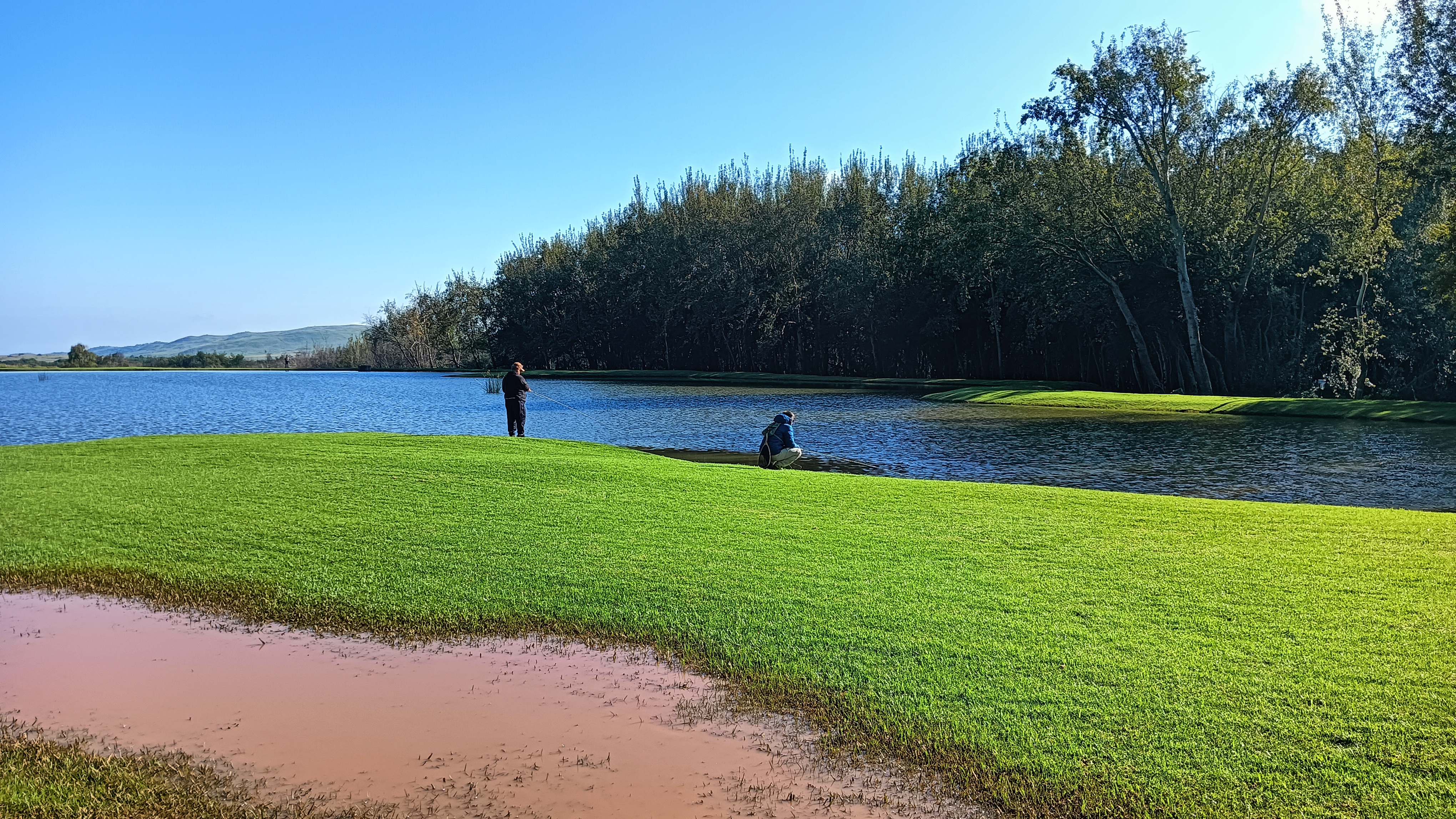Autumn (Mar–May)
- Conditions: Cooling water, stable weather
- Best For: Big dries, dry/dropper
- Flies: Stimulators, Hoppers, Adams
- See tactics →
Catch big browns & rainbows in crystal-clear waters. Half & full-day trips with expert dry fly instruction.
Just 2.5 hours from Johannesburg, Dullstroom sits high in the Mpumalanga highlands and is widely regarded as South Africa’s premier fly fishing destination. Cool, misty air, spring-fed waters, and scenic stillwaters and streams create reliable conditions for rainbow and brown trout throughout the year.
The area’s elevation—home to the country’s highest railway station—helps keep water cool and clear, which is ideal for trout. Between private estate dams, well-managed public waters, and nearby rivers, Dullstroom offers options for every angler: from technical dry-fly sight fishing to productive nymphing and streamer tactics on deeper stillwaters.
Use this page as your hub for planning a successful trip. Dive deeper into each topic below:
Dullstroom fishes year-round, but each season favours different tactics. Use this quick view, then dive deeper in the full Fly Fishing Seasons in Dullstroom guide.
Dullstroom offers a mix of private estate stillwaters, well-managed public dams, and short stream sections. Here are two key venues our guests love—plus tips on when and how to fish them.
See more about Laverpa here


Clear water and changing light call for smart presentation. These proven tactics—refined on Dullstroom dams and short stream sections—help you catch more trout in every season.
Pro Tip: Watch for sippers—barely a dimple—then scale down one fly size and one tippet size.
Want seasonal timing? Read the Seasons Guide.
Pro Tip: In ultra-clear water, drop the indicator and euro-nymph short leaders for stealth.
Get a full packing list in our Gear Checklist.
Pro Tip: When trout follow but won’t eat, speed up the last metre—or kill it completely.
See flies we rely on in Best Flies for Dullstroom.
Pro Tip: If the dry twitches or stalls, lift—emergers are often inhaled without a splash.
Ready to put it together? Book a Guided Session.
Matching the hatch is important—but over years of guiding, these fly patterns have proven reliable across Dullstroom’s stillwaters and streams. Pack them in different sizes and colours for year-round success.

Top all-round dry for mayfly hatches and sipping trout.
Dry Fly
Deadly subsurface; works year-round in both rivers and dams.
Nymph
Covers water fast—great for prospecting and windy days.
Streamer
For subtle rise forms—imitates emerging midges and mayflies.
EmergerClear water and selective trout reward a balanced setup. Here’s the kit we recommend for Dullstroom’s stillwaters and short stream sections—plus a printable checklist.
Not essential for stillwaters (most are bank-only). Waders help in winter and on short stream sections—pack if you have space.
Mono (nylon) for dries/emerger drifts; fluorocarbon for droppers and nymphs where sink and abrasion resistance help.
A 10 ft 4 wt with a WF floating line. Add an intermediate spare spool and you’re covered for most Dullstroom scenarios.




Spring (September–November) and autumn (March–May) are the best seasons for fly fishing in Dullstroom. Water temperatures stay in the trout’s comfort range (7–14°C), with active mayfly and caddis hatches.
Proven patterns include Parachute Adams, Pheasant Tail Nymphs, Woolly Buggers, CDC Emergers, and Damsel Nymphs. Terrestrials like hoppers and beetles also work well in summer.
Laverpa Dam and Valley of the Rainbow are two premier destinations, with clear stillwaters and river options. Private estate dams and stretches of the Klip River also offer excellent trout fishing.
Yes. We provide half-day and full-day guided trips from Johannesburg to Dullstroom, including expert instruction, fly selection advice, and on-water coaching. Booking is essential.
A 3–5 weight fly rod with floating line, tapered leaders, and size 14–18 dry flies or nymphs will cover most conditions. Waders are optional but useful for rivers and cooler months.
Absolutely! Dullstroom is perfect for beginners, thanks to easy access waters and expert guides who provide step-by-step coaching on casting, fly presentation, and fish handling.
